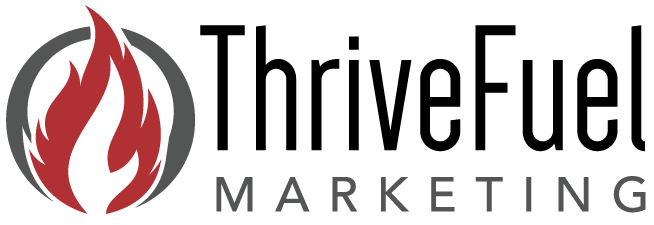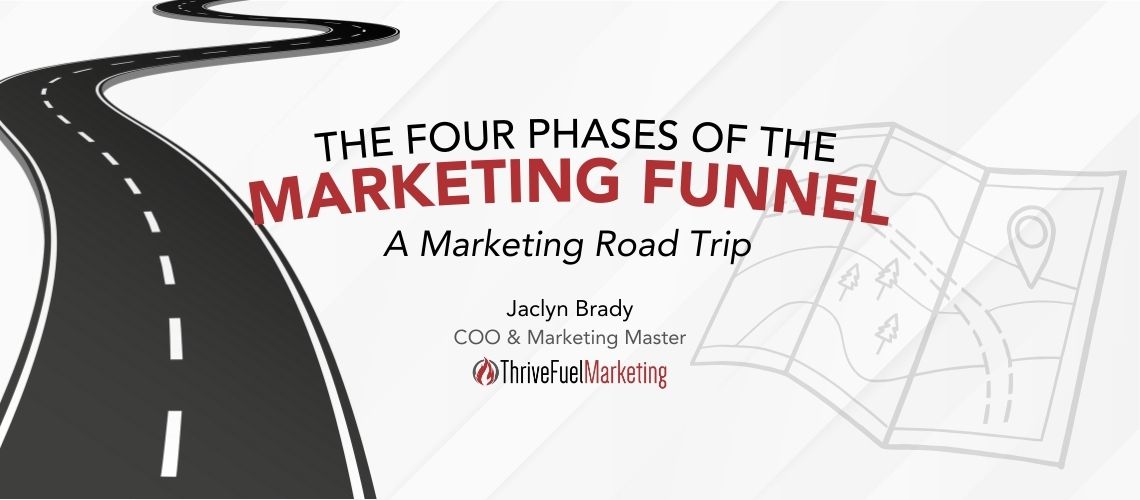Hello, fellow small business enthusiasts! Today, let’s hit the road and cruise through the essential phases of marketing: Awareness, Consideration, Conversion, and Loyalty. With over two decades in the marketing realm, I’m here to unveil the secrets, share insights, and explain why these phases are the keys to small business success.
Sales Funnel vs. Marketing Funnel
Before embarking on our journey, it’s crucial to grasp the distinction between the “sales funnel” and the “marketing funnel.” While commonly used interchangeably, these are two interconnected components. The sales funnel is dedicated to the buying process, while the marketing funnel encompasses the entire customer journey. Each plays a distinct role in supporting the goals of marketing and sales within a business. Comprehending both is essential for developing comprehensive strategies that nurture leads from awareness to loyalty.
The marketing function bears the responsibility of creating and managing a brand, fostering awareness, and generating sales-qualified leads. Our focus today is on unraveling how the marketing funnel and its diverse phases play a pivotal role in supporting this function. So, let’s dive into the intricacies of our marketing road trip!
The Four Phases on the Marketing Funnel Map
-
Awareness:
In the vast landscape of our marketing road trip, the awareness stage is akin to the first spark of excitement when embarking on a journey. Imagine your brand as the vibrant destination waiting to be explored by potential customers. To navigate this leg successfully, employ an array of strategies, including the captivating billboards of the digital highway – social media ads. These ads act as signposts, catching the attention of passing travelers and enticing them to venture into the realms of your brand. Simultaneously, engage in content marketing, weaving compelling narratives that serve as intriguing travel tales. By doing so, you create an enticing backdrop that draws your audience into the rich story of your brand. Harness the power of SEO, ensuring that your brand becomes a prominent landmark on the digital map, easily discoverable by those seeking the adventures you offer.
The message? “Discover [Your Brand], where innovation meets quality. Follow us for exciting updates and insights into a world of possibilities!” This message serves as the initial invitation, promising a journey filled with innovation, quality, and a myriad of possibilities, setting the tone for an exhilarating exploration of your brand during this exciting awareness phase.
-
Consideration:
As our journey progresses through the marketing roadmap, we find ourselves at the consideration stage, a phase akin to travelers stopping to explore the intriguing destinations along the way. At this juncture, potential customers are delving deeper into what your brand has to offer. Imagine your brand as a captivating landmark that beckons visitors to discover its secrets. To make this exploration enticing, provide an array of content like blog posts, offering insightful narratives that unveil the unique features and benefits of your products or services. Utilize videos as immersive travel guides, providing a visual tour of the distinctive aspects that set your brand apart. Testimonials act as the enthusiastic endorsements from fellow explorers, echoing the positive experiences they’ve had with your brand.
The message? “Explore why [Your Product/Service] is the choice of savvy consumers. Dive into our blog for in-depth insights and testimonials.” This message serves as an invitation to a more profound journey, encouraging potential customers to delve into the wealth of information available and witness firsthand why your offerings stand out in the landscape of choices. It’s a moment of thoughtful consideration, where travelers weigh their options and find value in the unique offerings your brand presents.
-
Conversion:
Now, as we approach the conversion phase, our travelers are ready to take the wheel and transition from explorers to active participants in the journey. This marks the point where the road trip transforms into a personalized driving experience. To facilitate this transition, employ effective tactics such as targeted emails, creating a direct communication channel that guides travelers with personalized content tailored to their preferences and needs. Introduce limited-time offers as enticing signposts along the route, creating a sense of urgency and excitement. These offers act as scenic detours, tempting travelers to take a definitive step forward. Complement these with compelling Calls-to-Action (CTAs) that serve as clear road signs, guiding travelers towards the desired destination – making a purchase or signing up for a service.
The message? “Unlock exclusive benefits today! Limited-time offer on [Product/Service]. Act fast and experience the difference with [Your Brand].” This message is designed to motivate travelers to seize the moment, emphasizing the unique advantages awaiting those who choose to embark on this next leg of the journey. It’s a call to action that not only instills a sense of urgency but also promises a distinctive and rewarding experience, compelling travelers to make the decision to convert and become valued customers. The conversion phase is all about facilitating a seamless transition from interest to action, ensuring that the journey reaches its desired destination with a successful conversion.
-
Loyalty:
As our road trip companions reach the final stretch of the journey, fostering loyalty becomes paramount. This phase is not merely about reaching the destination but ensuring that our companions choose to embark on future adventures with us. To achieve this, implement robust loyalty programs that go beyond conventional appreciation. Craft personalized communication strategies that make our companions feel seen, valued, and understood. Extend post-purchase support akin to a reliable travel guide, ensuring that the experiences they’ve had align with their expectations.
The message? “Thank you for choosing [Your Brand]! As a valued traveler, enjoy exclusive rewards, early access, and personalized offers. Your loyalty means the world to us!” This message serves as a heartfelt expression of appreciation, acknowledging the companionship throughout the journey. By offering exclusive rewards, early access to upcoming offerings, and personalized deals, it extends an invitation for our companions to continue the adventure with added perks. It’s a testament to the brand’s commitment to making the loyalty phase not just an end but a new beginning – a continuation of a mutually beneficial and enduring relationship. This approach creates a bond that goes beyond a single road trip, fostering brand advocacy and transforming loyal customers into brand ambassadors who enthusiastically share their positive experiences with others. In the loyalty phase, the emphasis is on nurturing lasting relationships and turning one-time travelers into lifelong brand advocates.
Why Small Business Owners Should Take the Trip
- Resource Optimization: Small businesses often operate with limited resources, making it essential to maximize the impact of every marketing initiative. Focusing on all four phases of the marketing funnel allows for strategic resource allocation. By diversifying efforts across awareness, consideration, conversion, and loyalty, businesses can ensure that resources are utilized effectively at each stage of the customer journey. This not only prevents overinvestment in a single area but also creates a holistic approach that caters to the diverse needs of potential and existing customers.
- Customer Retention: Acquiring new customers is undoubtedly crucial, but retaining existing ones is equally—if not more—important for sustained success. Nurturing loyalty through the entire marketing funnel encourages repeat business and transforms satisfied customers into brand advocates. A loyal customer base not only contributes to consistent revenue streams but also serves as a powerful marketing asset. Loyal customers are more likely to recommend the business to others, essentially becoming brand ambassadors who amplify the reach of the marketing efforts.
- Measurable Results: To gauge the effectiveness of marketing strategies, it’s imperative to align goals with specific phases of the marketing funnel. Each phase comes with its own set of objectives, whether it’s increasing brand awareness, driving conversions, or fostering customer loyalty. By clearly defining goals for each stage, small businesses can establish key performance indicators (KPIs) that facilitate precise measurement. This data-driven approach enables businesses to evaluate the success of their marketing tactics, identify areas for improvement, and make informed decisions to enhance overall performance.
Aligning Goals and Tactics
Defining specific objectives for each phase of the marketing road trip is akin to setting destinations on a travel itinerary. Small business owners embark on this journey armed with clear goals that align with their overall business objectives.
- In the awareness phase, the goal may be to increase brand mentions, creating a buzz that extends the brand’s reach. This could involve leveraging social media ads, influencer partnerships, and SEO strategies to ensure the brand’s name becomes a familiar presence in the digital landscape.
- In the consideration phase, the objectives shift toward engaging potential customers and showcasing the uniqueness of the business. Content strategies like blog posts, explainer videos, and customer testimonials become the vehicles for conveying the brand’s value proposition. The goal here is not just visibility but also to influence perceptions and position the brand as the preferred choice among savvy consumers.
- When it comes to the conversion phase, the focus sharpens on tangible outcomes. Now, the small business aims for higher sales and successful customer conversions. Tactics such as targeted emails, limited-time offers, and compelling CTAs guide potential customers into the driver’s seat, motivating them to make a purchase. The objective is not merely to be seen or considered but to guide the audience toward a specific action that contributes to the business’s bottom line.
- As the road trip reaches its final leg in the loyalty phase, the objectives shift once again. Here, the emphasis is on retaining customers and fostering long-term relationships. Loyalty programs, personalized communication, and post-purchase support become the means to ensure customers feel valued and appreciated. The goal is not just a one-time transaction but a sustained, mutually beneficial connection that leads to repeat business and brand advocacy.
By defining specific objectives for each phase, small business owners can ensure that their efforts align with broader business goals. Armed with a comprehensive understanding of these phases, small business owners can craft targeted campaigns that resonate with their audience at every step, ultimately driving success and growth.
Thank you, fellow marketing road trippers, for joining me on this insightful journey through the four phases of the marketing road trip. As you navigate your own paths in the vast landscape of digital marketing, I invite you to connect with me on LinkedIn, where we can share stories, insights, and triumphs on our marketing adventures. Stay tuned for more helpful tips, strategies, and insights from not only myself but also my colleagues at ThriveFuel Marketing.
Here’s to your marketing success and the exciting road that lies ahead! Safe travels, and may your marketing endeavors be as rewarding as the destinations they lead you to.
Jaclyn Brady
Chief Operations Officer
ThriveFuel Marketing
Sources:
– Kotler, P., & Armstrong, G. (2021). Principles of Marketing. Pearson.
– Smith, A. N., Fischer, E., & Yongjian, C. (2012). How Does Brand-related User-generated Content Differ across YouTube, Facebook, and Twitter?. Journal of Interactive Marketing, 26(2), 102-113. doi:10.1016/j.intmar.2012.01.004



